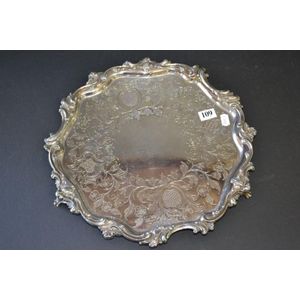Victorian Fob Swivel with Carnelian, Blood Stone and Onyx
You must be a subscriber, and be logged in to view price and dealer details.
Subscribe Now to view actual auction price for this item
When you subscribe, you have the option of setting the currency in which to display prices to $Au, $US, $NZ or Stg.
- Carnelian Glass - Carnelian glass is a type of glass that is colored red, orange, or brownish-red. It is made by adding iron oxide to the glass mixture. The color of carnelian glass can vary depending on the amount of iron oxide that is added, as well as the firing temperature. Carnelian glass is often used to make beads, jewellery, and other decorative items. It can also be used to make stained glass windows and other art objects. Carnelian glass is sometimes called "carnelian chalcedony" or "carnelian quartz."
Carnelian glass was first made in the Roman Empire. It was also made in ancient Egypt, Greece, and Mesopotamia. Carnelian glass was not made again until the Renaissance, when it became popular again. Today, carnelian glass is made in many countries around the world. - Victorian Period - The Victorian period of furniture and decorative arts design covers the reign of Queen Victoria from 1837 to 1901. There was not one dominant style of furniture in the Victorian period. Designers used and modified many historical styles such as Gothic, Tudor, Elizabethan, English Rococo, Neoclassical and others, although use of some styles, such as English Rococo and Gothic tended to dominate the furniture manufacture of the period.
The Victorian period was preceded by the Regency and William IV periods, and followed by the Edwardian period, named for Edward VII (1841 ? 1910) who was King of the United Kingdom and the British Dominions and Emperor of India for the brief period from 1901 until his death in 1910. - Onyx - Onyx is a form of agate, used from antiquity and popular again in the 1920s and 30s. European onyx is generally green, but can be many other colours, and can contain bands of black and/or white.
This multicoloured stone is widely used for table tops, lamp bases and in jewellery. Some types of onyx are also used for cameos of which the upper white layer is cut away to reveal the colour beneath.
This item has been included into following indexes:
Visually similar items

A sterling silver armorial salver, 1911, Sheffield, with maker's mark of Henry Wigfull, the circular tray raised upon three small feet, banner style edges with applied scrolls and anethemion motifs, to the centre an engraved armorial with a Welsh motto pro

Early 19th century Old Sheffield plate rococo tray or waiter

Hallmarked sterling silver salver. Birmingham 1936, makers J.B. Chatterley & Sons. Tri footed. Three small dents. Depth 32 cm. Weight 791g

A coral jewellery suite, comprising a ring and earrings, the ring set with oval pink coral cut en cabochon, set in a border of round brilliant cut diamonds, the earrings of conforming design, all mounted in 18ct gold, ring size M
